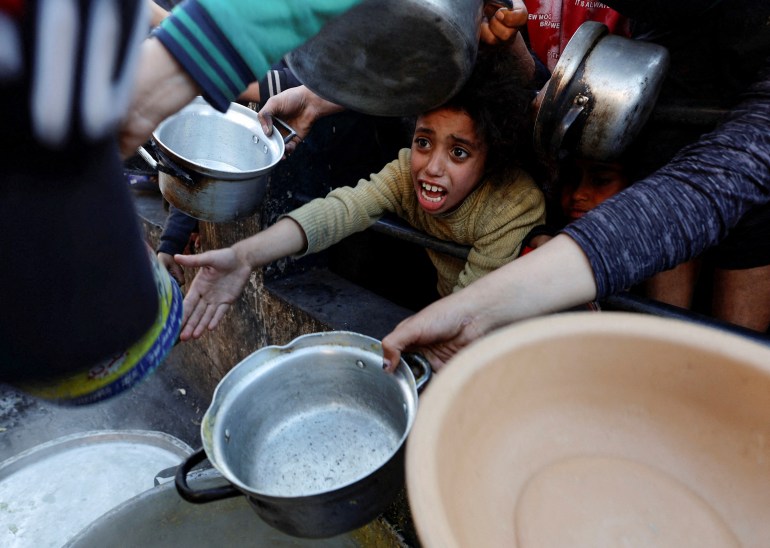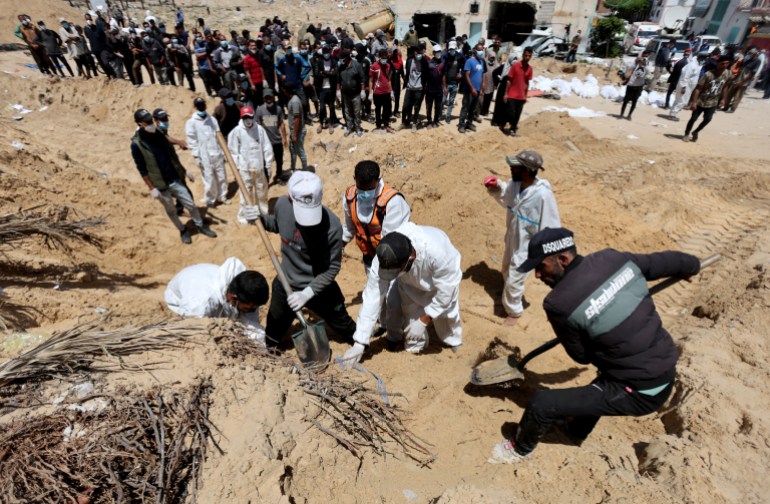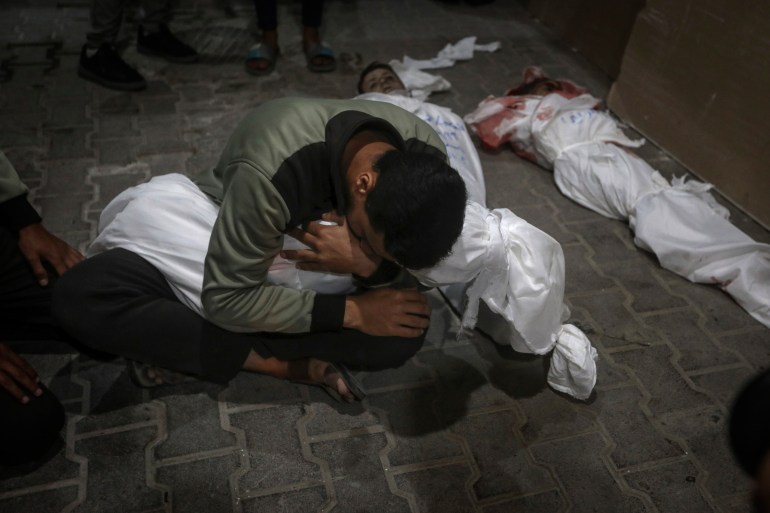Mass graves, crippled hospitals, thousands of civilian deaths and near-total destruction of infrastructure haunt Gaza as Israel’s war on the besieged Palestinian coastal enclave entered its 200th day on Tuesday.
Israel launched its brutal military offensive on October 7 following a deadly attack by Hamas fighters. Some 1,139 people were killed and about 240 people were taken captive by the Palestinian fighters. Nearly 85 percent of Gaza’s 2.3 million people have been displaced and more than 14,000 children have been killed in the offensive which critics have dubbed a war of vengeance.
Here are some numbers that highlight the unprecedented level of violence used in the past six months while Israel remains adamant about launching a ground invasion in Rafah – the southernmost point in Gaza, sheltering 1.5 million Palestinians, most of whom fled earlier phases of the war.
34,000 killed
According to the Gaza Health Ministry, at least 34,183 people have been killed, and 77,084 have been wounded in Israeli attacks.
Approximately 72 percent of those killed are women and children, according to an update by the Gaza Media Office on Tuesday.
On Monday, United Nations Human Rights chief Volker Turk said a child in Gaza is killed or wounded “every 10 minutes”.
Meanwhile, some 7,000 people are missing, according to the Gaza Media Office, many presumed dead under the rubble.
In a report published in late March, the UN Special Rapporteur on the Occupied Palestinian Territories Francesca Albanese said there were clear indications that Israel has violated three of the five acts listed under the UN Genocide Convention.
These acts Albanese said were “killing members of the group; causing serious bodily or mental harm to the group’s members; and deliberately inflicting on the group conditions of life calculated to bring about its physical destruction in whole or in part”.

62 percent homes destroyed
Many residential areas across Gaza have been destroyed and ruined by relentless bombing. At least 75,000 tonnes of explosives have dropped on Gaza by Israeli forces, according to the Gaza media office.
Earlier this month, the United Nations Relief and Works Agency for Palestine Refugees in the Near East, also known as UNRWA, said 62 percent of all houses in the besieged territory have been damaged or destroyed.
Nearly 90,000 housing units have been completely destroyed, while nearly 300,000 housing units — or 62 percent of homes — have been partially destroyed by the Israeli air and ground offensive, according to the Gaza media office.
A World Bank and UN report published on April 2 said the cost of damage to critical infrastructure in the first four months of Israel’s war is estimated at about $18.5bn.
1.1 million food insecure
Approximately 1.1 million people — half of pre-war Gaza’s population — are living through catastrophic food insecurity, the world’s hunger watchdog, known as the Integrated Food-Security Phase Classification (IPC), said in a report published on March 18.
In northern Gaza, famine is likely to occur by May, and could spread across the enclave by July, the report added.
According to the IPC, famine is defined as at least 20 percent of households face an extreme lack of food, at least 30 percent of children suffer from acute malnutrition, and at least two adults or four children for every 10,000 people die every day from outright starvation or a combination of malnutrition and disease.

The Gaza Media Office on Tuesday claimed at least 30 children have died “as a result of famine”. It said some 1.09 million people have been infected with diseases as a result of being displaced in the coastal enclave.
Moreover, the war in the coastal enclave has hampered the work of aid agencies such as UNRWA and other humanitarian relief groups.
The UN has said more than 200 aid workers have been killed during the war, most of them Palestinians, according to UN figures.
As of March 16, UNRWA says at least 180 of its staff have been killed since October 7.
26 hospitals destroyed and hundreds of medics killed
Israeli forces have repeatedly targeted hospitals in the Gaza Strip, including besieging some of its biggest health facilities.
World Health Organization Director-General Tedros on March 30 said only 10 out of Gaza’s 36 hospitals were still “minimally functional”.
Tlaleng Mofokeng, the United Nations special rapporteur on the right to health, on Monday, said at least 350 healthcare professionals have been killed since October 7, with 520 wounded, adding that the numbers were “grossly under-reported”.
Mofokeng said Israel’s war in Gaza has from the start been a “war on the right to health” and has “obliterated” the health system in the coastal enclave.
The Gaza media office on Tuesday said 485 medical staff have been killed since the war began on October 7.

“The destruction of healthcare facilities continues to catapult to proportions yet to be fully quantified,” Mofokeng, a doctor from South Africa, said.
In recent months, some of Gaza’s most renowned health facilities were besieged by Israeli forces. Last week, nearly 300 bodies were retrieved from a mass grave found inside Nasser Medical Complex in Khan Younis weeks after Israeli forces withdrew.
Earlier this month, bodies were also uncovered at the al-Shifa Hospital, which was besieged by Israeli forces for weeks.
Four UN resolutions calling for ceasefire vetoed
The US has vetoed United Nations Security Council (UNSC) resolution calling for ceasefire on three occasions since October 7, while a fourth truce resolution was blocked by Algeria, Russia and China.
On March 23, Algeria, Russia and China vetoed a US-drafted resolution, which Moscow said was a “hypocritical spectacle” that did not pressure Israel.
However, on March 25, the US decided not to veto a ceasefire resolution, by abstaining from the vote. The resolution calls for an immediate ceasefire for the Muslim fasting month of Ramadan. Israel has failed to cease fire despite the resolution.
The US has consistently backed Israel at the UN, while also supplying major chunk of weapons to the country. The US House of Representative approved $26bn in aid to Israel earlier this week.
Read More: World News | Entertainment News | Celeb News
Aljazera










